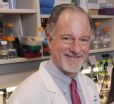(Press-News.org) FINDINGS: Devising a novel method to identify potential genetic regulators in planarian stem cells, Whitehead Institute scientists have determined which of those genes affect the two main functions of stem cells. Three of the genes are particularly intriguing because they code for proteins similar to those known to regulate mammalian embryonic stem cells. Such genetic similarity makes planarians an even more attractive model for studying stem cell biology in vivo.
RELEVANCE: Stem cells may hold the promise to regrow damaged, diseased, or missing tissues in humans, such as insulin-producing cells for diabetics and nerve cells for patients with spinal cord injuries. With its renowned powers of regeneration and more than half of its genes having human homologs, the planarian seems like a logical choice for studying stem cell behavior. Yet, until now, scientists have been unable to efficiently identify the genes that regulate the planarian stem cell system.
CAMBRIDGE, Mass. – Despite their unassuming appearance, the planarian flatworms in Whitehead Institute Member Peter Reddien's lab are revealing powerful new insights into the biology of stem cells—insights that may eventually help such cells deliver on a promising role in regenerative medicine.
In this week's issue of the journal Cell Stem Cell, Reddien and scientists in his lab report on their development of a novel approach to identify and study the genes that control stem cell behavior in planarians. Intriguingly, at least one class of these genes has a counterpart in human embryonic stem cells.
"This is a huge step forward in establishing planarians as an in vivo system for which the roles of stem cell regulators can be dissected," says Reddien, who is also an associate professor of biology at MIT and a Howard Hughes Medical Institute (HHMI) Early Career Scientist. "In the grand scheme of things for understanding stem cell biology, I think this is a beginning foray into seeking general principles that all animals utilize. I'd say we're at the beginning of that process."
Planarians (Schmidtea mediterranea) are tiny freshwater flatworms with the ability to reproduce through fission. After literally tearing themselves in half, the worms use stem cells, called cNeoblasts, to regrow any missing tissues and organs, ultimately forming two complete planarians in about a week.
Unlike muscle, nerve, or skin cells that are fully differentiated, certain stem cells, such as cNeoblasts and embryonic stem cells are pluripotent, having the ability to become almost cell type in the body. Researchers have long been interested in harnessing this capability to regrow damaged, diseased, or missing tissues in humans, such as insulin-producing cells for diabetics or nerve cells for patients with spinal cord injuries.
Several problems currently confound the therapeutic use of stem cells, including getting the stem cells to differentiate into the desired cell type in the appropriate location and having such cells successfully integrate with surrounding tissues, all without forming tumors. To solve these issues, researchers need a better understanding of how stem cells tick at the molecular level, particularly within the environment of a living organism. To date, a considerable amount of embryonic stem cell research has been conducted in the highly artificial environment of the Petri dish.
With its renowned powers of regeneration and more than half of its genes having human homologs, the planarian seems like a logical choice for this line of research. Yet, until now, scientists have been unable to efficiently find the genes that regulate the planarian stem cell system.
Postdoctoral researcher Dan Wagner, first author of the Cell Stem Cell paper, and Reddien devised a clever method to identify potential genetic regulators and then determine if those genes affect the two main functions of stem cells: differentiation and renewal of the stem cell population.
After identifying genes active in cNeoblasts, Wagner irradiated the planarians, leaving a single surviving cNeoblast in each planarian. Left alone, each cNeoblast can form colonies of new cells at very specific rates of differentiation and stem cell renewal.
The researchers knocked down each of the active genes, one per planarian, and observed how the surviving cNeoblasts responded. By comparing the rate of differentiation and stem cell renewal to that of normal cNeoblasts, they could determine the role of each gene. Thus, if a colony containing a certain knocked down gene were observed to have fewer stem cells than the controls, it could be concluded that gene in question plays a role in the process of stem cell renewal. And if the colony had fewer differentiated cells than normal, the knocked down gene could be associated with differentiation.
"Because it's a quantitative method, we can now precisely measure the role of each gene in different aspects of stem cell function," says Wagner. "Being able to measure stem cell activity with a colony is a great improvement over methods that existed before, which were much more indirect."
In total, Wagner identified 10 genes impacting cNeoblast renewal, and two genes with roles in both renewal and differentiation. According to Wagner, three of the stem cell renewal genes are particularly intriguing because they code for proteins that are similar to components of Polycomb Repressive Complex 2 (PRC2), known to regulate stem cell biology in mammalian embryonic stem cells and in other stem cell systems.
"It's interesting because it suggests a parallel between how stem cells operate in planarians and in mammals. For example, there might be similarities between how cNeoblasts and embryonic stem cells function and maintain stemness at the molecular level," he says.
###This work was supported by the National Institutes of Health (NIH) and the Keck Foundation.
Written by Nicole Giese Rura
Peter Reddien's primary affiliation is with Whitehead Institute for Biomedical Research, where his laboratory is located and all his research is conducted. He is also a Howard Hughes Medical Institute Early Career Scientist and an associate professor of biology at Massachusetts Institute of Technology.
Full Citation:
"Genetic Regulators of a Pluripotent Adult Stem Cell System in Planarians Identified by RNAi and Clonal Analysis" Cell Stem Cell, March 2, 2012.Daniel E. Wagner (1), Jaclyn J. Ho (1), and Peter W. Reddien (1).
1. Howard Hughes Medical Institute, MIT Biology, Whitehead Institute for Biomedical Research, 9 Cambridge Center, Cambridge, MA 02142, USA
Planarian genes that control stem cell biology identified
2012-03-05
ELSE PRESS RELEASES FROM THIS DATE:
Where pain lives: Managing chronic pain tougher in poor neighborhoods
2012-03-05
Living in a poor neighborhood was linked with worse chronic pain for young adults, according to a study by the University of Michigan Health System, but young black patients faced difficulties with pain management no matter where they lived.
With the study, the University of Michigan researchers have opened a new frontier in addressing chronic pain in America.
The results were published in a recent issue of The Journal of Pain and showed where a patient lives, its structural barriers, affluence, and access to resources such as pain medicines, play an important role ...
Rising Star Cheyanne Releases Music Video For "Perfectly Imperfect
2012-03-05
Website: http://www.myspace.com/cheyannewelch
Rising pop country singer Cheyanne has the industry buzzing with excitement for her newest single, "Perfectly Imperfect." This charming, charismatic singer is gaining the support of fans and impressing critics from all over and has now released the official video for "Perfectly Imperfect!"
Currently working on her full album, Cheyanne has responded to the demand of fans for more with the release of her newest video. "Perfectly Imperfect" is a catchy, candid tune that carries a unique, fresh ...
A supercharged protein reduces damage from heart attack
2012-03-05
CHAPEL HILL, N.C. – Researchers from the University of North Carolina at Chapel Hill reduced damage from a heart attack by 50 percent by enhancing a protective protein found in mice and humans. The study, in which mice were bred to make a supercharged version of the protein focal adhesion kinase, or FAK, appeared March 1 in the online edition of the journal Arteriosclerosis, Thrombosis and Vascular Biology.
"This study shows that we can enhance existing cell survival pathways to protect heart cells during a heart attack," said Joan Taylor, PhD, associate professor in ...
RIT Students Produce Photography Tutorials for the BioCommunications Association
2012-03-05
Rochester Institute of Technology's fall 2011 Advanced Digital Media Class was hired by the BioCommunications Association (BCA) to develop and produce video tutorials for amateur medical and biological photographers.
The 14 students in Biomedical Photographic Communication Assistant Professor Tom Zigon's class worked in four teams to produce video tutorials on photographing reflective subjects, exposure control, and a topic of their choice including:
• Digital file formats and compression
• Techniques for maintaining consistency in medical imaging
• Sample preparation ...
Overfishing leaves swaths of Mediterranean barren
2012-03-05
WASHINGTON -- Centuries of overexploitation of fish and other marine resources — as well as invasion of fish from the Red Sea — have turned some formerly healthy ecosystems of the Mediterranean Sea into barren places, an unprecedented study of the Mediterranean concludes.
Research by an international team of scientists designed to measure the impact of marine reserves found that the healthiest places were in well-enforced marine reserves; fish biomass there had recovered from overfishing to levels five to 10 times greater than that of fished areas. However, marine "protected" ...
Cardiologists identify mechanism that makes heart disease worse in diabetics
2012-03-05
DALLAS -- UT Southwestern Medical Center cardiologists have uncovered how a specific protein's previously unsuspected role contributes to the deterioration of heart muscle in patients with diabetes. Investigators in the mouse study also have found a way to reverse the damage caused by this protein.
The new research, available online and published in the March 1 issue of the Journal of Clinical Investigation, was carried out in the laboratory of Dr. Joseph Hill, director of the Harry S. Moss Heart Center at UT Southwestern.
"If we can protect the heart of diabetic patients, ...
Improv Comedy Club Contest Selects Comedian Don Barnhart For Finals In Search For Next Great Comedian
2012-03-05
The Improv Comedy Club's "Up Yours" Comedy Contest picks Don Barnhart for a spot in the finals in search for America's Next Great Comedian.
Barnhart took second place in the Improv Comedy Club's "Up Yours" online contest battling it out with the front-runner in fan votes earing him a spot in the live finals. The contest was open to everyone and votes came from fans around the world using social media outlets such as Facebook and Twitter.
The top three vote leaders have secured spots in finals with the judges picking 3 wild-card entries for the ...
NASA satellite movie shows movement of tornadic weather system
2012-03-05
VIDEO:
This movie was created using GOES-13 visible and infrared satellite imagery from Feb. 28 at 1245 UTC (7:45 am. EST) through March 1, and shows the progression of the cold...
Click here for more information.
A satellite animation of NOAA's GOES-13 satellite imagery showed the movement of the front that triggered severe storms and tornadoes in several states on February 29, 2012. Today, NASA released a GOES satellite animation of that weather system that triggered at ...
Boys & Girls Clubs Of North Central Texas Announce 2012 Benefit Charity Celebrity Golf Tournament
2012-03-05
Join the excitement as the Boys & Girls Clubs of North Central Texas host their sixth annual Boys & Girls Clubs of North Central Texas Golf Tournament on Thursday, April 26, 2012 at Lantana Golf Club in Lantana, Texas. The event will help provide continued support for North central Texas youth being served by the Boys & Girls Clubs of North Central Texas.
The four-person scramble tournament will kick-off at 1:30pm with a chance to play 18-holes of golf with local celebrities. It will feature a post-tournament awards dinner, live auction, raffles, and numerous ...
Everyday Slipcovers Opens Web Site www.everydayslipcovers.com Slipcovers For All Furniture Types
2012-03-05
http://www.everydayslipcovers.com Furniture Slipcovers For All Types of Furniture. To celebrate the opening of the web site EverydaySlipcovers is offering a 10% discount on all its inventory for orders over $100 for the month of March and in addition free shipping on all orders over $300.
EverydaySlipcovers has two goals for the company and both are centered around the customers. The first goal of EverydaySlipcovers.com is to meet the needs of people looking for quality slipcovers at reasonable prices. The site carries slipcovers for the everyday needs as well as the ...



